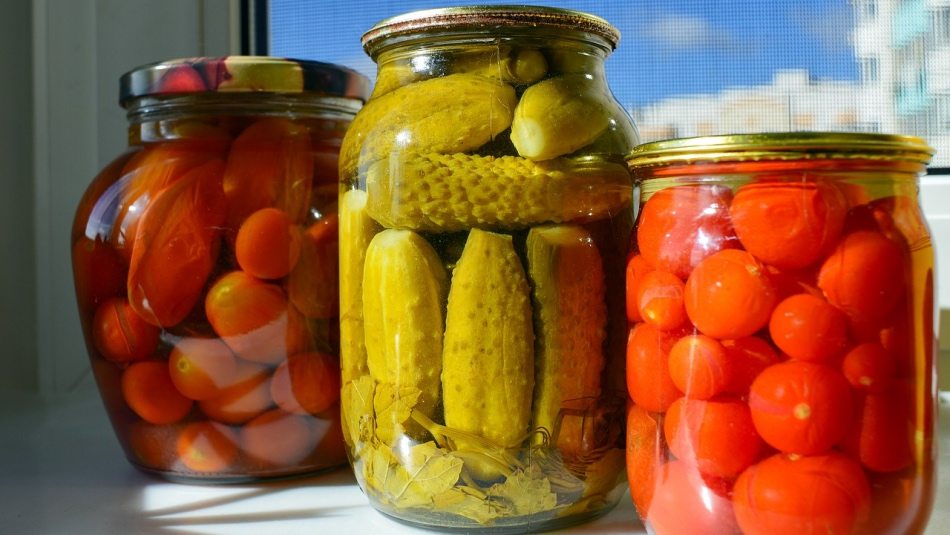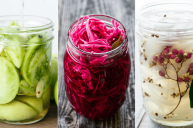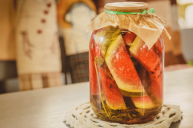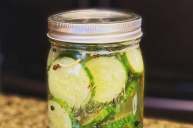Homemade pickles are one of those magical refrigerator items. Not only do they reduce food waste by preserving your favorite vegetables for later enjoyment, but they create something beautiful in themselves. You can go sweet, savory, tangy, spicy, crunchy, garlicky - the possibilities are endless!
Videos by Wide Open Country
Last summer, I had way too many zucchini and cucumbers from the garden. My neighbors stopped answering the door when they saw me coming for fear I would give them more garden produce! So I mastered the basic pickle recipes, and then moved on to some fun flavored ones!
How to Make Pickles
Homemade pickles are easier to make than you may think. All you need is a fruit or vegetable, water or vinegar, sugar, salt, and some spices. To preserve pickles for long periods of time, you can cook them in boiling water, something called canning in a water bath. I usually skip this step, though, because mine never last longer than a month in the fridge!
Before we move into which flavorings to add to our pickles, let's get to know the flavor profiles of the three basic types of pickles: brined pickles, vinegar pickles, and fermented pickles.
Brined pickles
These pickles simply use water and pickling salt to cure and preserve your vegetables. You can turn them into savory or sweet pickles, depending on how much salt and sugar is added. They don't have any vinegar so they lack the tangy flavor of the pickles found at grocery stores.
Of the three pickling options, they're the most simple and the least acidic. An example of this type is Chicago-style giardiniera or traditional dill pickles.
Vinegar pickles
When most people think about pickles, they imagine the tangy, acidic flavor of vinegar pickles. The fruit or vegetable is preserved in vinegar, most commonly apple cider vinegar or white vinegar.
These pickles are very versatile because any vinegar can be used, and the pH content of the vinegar almost guarantees the vegetable is well preserved. An example of this type is refrigerator pickles or bread and butter pickles.
Fermented pickles
https://www.instagram.com/p/BMPCPx1h82f/
This type involves a lacto-fermentation process. Vegetables are soaked in a salt and water brine that, when left at room temperature for a few days, creates a beneficial bacteria (probiotics) that preserves the vegetable.
This process gives the pickle a slightly sour, acidic flavor. You may be familiar with using this method to make sauerkraut or kimchi, but it can also be used to make sour pickles and lacto-fermented pickles.
Pickling Lime
You may see some recipes that call for pickling lime to create crispy pickles. The calcium in pickling lime fortifies the pectin in the vegetable, preventing mushy pickles.
The powder itself is dangerous to consume, so the vegetable must be rinsed three times in fresh water to ensure all the lime is removed before proceeding with the pickling process.
Pickle Flavors
Now that you're a pro and you know all about how to make homemade pickles, let's add some flavors! We're not talking about crazy pickle-flavored things: we're talking about the different flavorings you can use to amp up your pickle game.
1. Garlic Dill
Dill pickles are classic, but this twist adds the spicy, pungent flavor of garlic. You can use fresh dill or dill seed to achieve that famous dill flavor, and throw in as many fresh garlic cloves as you can stand.
If you really want to go out on a limb, sub in some beets for those pickling cucumbers.
2. Peppercorns
Play around with the different varieties of peppercorns. Black peppercorns are mildly hot, pungent, and aromatic, while white pepper is earthy and hot without any pungency.
Green peppercorns are aromatic and fresh, or try Szechuan peppercorns which are aromatic with a moderate, lingering heat.
3. Pickled Watermelon Rind
No need for pickling cucumbers for this recipe: all you need is watermelon rind to make this sweet Southern favorite!
4. Cinnamon, Vanilla, and Cloves
Pickled grapes can get a sweet-tart boost of flavor by combining vinegar with the sweet flavors of cinnamon, vanilla, and cloves.
5. Sweet and Spicy
Why let sweet have all the fun? Red pepper flakes will amp up the spice, while doubling the sugar brings in the sweetness.
Sometimes I use Sriracha instead of the pepper flakes to add an extra sense of obsession to my pickles.
6. Super Spicy
My favorite pickles are in this category, especially slices of carrots pickled with a ton of jalapeno pepper slices.
Go even hotter if you like and add some serrano peppers!
7. Bloody Mary
Pickles are perfect on top of a bloody Mary, so why not infuse some of that flavor into the pickle itself? Use extra horseradish if you like it spicy!
8. Mustard Pickles
Seeds like mustard seed and celery seed are pretty common ingredients in pickling spice mix, but this old time favorite uses ground mustard to really pack a punch.
9. Citrus
Infuse your pickling brine with some orange peel, or substitute the juice from a lemon for some of the vinegar.
It'll add a refreshing brightness to your pickle and pairs especially well with fennel or onions.
10. Kool-Aid Pickles: Koolickles
This one is a little bizarre, but adding a packet of Kool-Aid to your pickling brine will add a delicious sweetness to the pickle, not to mention a bright color.
Now that you have a refrigerator full of flavorful pickles, let's learn how to make fried pickles!




